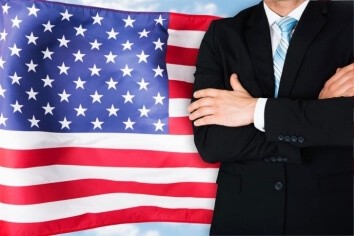Government instability prompts both Black and White Americans to show a preference for lighter-skinned over darker-skinned political candidates, researchers at New York University, the University of Chicago, and Rutgers University have found.
In addition, their findings, which appear in the latest issue of the Journal of Personality and Social Psychology, show that Whites express a greater interest in voting for a lighter-skinned candidate than a darker skinned candidate for an important political position, regardless of whether they think the government is stable or unstable. Alternatively, Blacks express greater interest in voting for a darker-skinned candidate when they see the government as stable.
“Our results show that when the system is seen as running smoothly, people engage in behaviors to enhance the social standing of their group, which explains preferences for a darker-skinned candidate among the study’s Black participants,” says Chadly Stern, a doctoral candidate in NYU’s Department of Psychology and the study’s lead author. “However, when the system is shaky, both Blacks and Whites show strong preferences for preserving the status quo, and so express greater interest in a lighter-skinned candidate.”
In a series of experiments, subjects were shown photographs of a hypothetical candidate for public office—the images used were of a man whom the study’s participants would be unlikely to recognize: 32-year-old Canadian hockey player Jarome Iginla, wearing a suit and tie, whose father is a Black Nigerian and whose mother is a White American. The researchers created three different versions of the photographs: one was unaltered, one was changed to lighten Iginla’s skin tone, and one was changed to darken it.
In the experiments, participants were asked to indicate how representative each photo (lighter-skinned, unaltered, darker-skinned) was of the candidate on a 1 (not at all) to 7 (a great deal) scale. This measure captured the mental image that people held, reflecting what they thought the candidate looked like. They were also asked to indicate the likelihood that they would vote for the candidate in an election on a 1 (not at all likely) to 7 (very likely) scale.
Previous research has demonstrated that people are more likely to vote for political candidates who most strongly look like members of their racial group. Consistent with these previous findings, the results showed that Whites who saw the lighter-skinned photograph as more representative of the candidate reported stronger intentions to vote for him, whereas Blacks who saw the darker-skinned photo as more representative indicated stronger intentions to vote for him. In other words, participants who represented the candidate’s skin tone as reflecting their own racial group expressed greater interest in voting for him.
The researchers also sought to measure how skin tone might affect voting preferences under different conditions—specifically, the perceived stability of governmental operations.
To do so, they informed the study’s participants that the candidate was running for a position in the U.S. Department of Education. The participants then read a news story that depicted the department as either stable and effective or as unstable and in disarray.
Their results showed that White participants who saw the lighter-skinned photo as more representative of the candidate were more likely to vote for him under both stable or unstable conditions. However, Black participants who saw the darker-skinned photo as more representative of the candidate were more likely to support the candidate under stable conditions, whereas Black participants who saw the lighter-skinned photo as more representative of the candidate were more likely to support him under unstable conditions.
In a final study, the researchers tested whether government stability would directly impact preferences for different candidates who vary in their skin tone. Participants viewed photographs depicting three different political candidates the researchers claimed were running for an important governmental position. Although participants did not know it, one candidate’s skin tone was lightened, one was darkened, and one was left unaltered. Whites expressed greater interest in voting for the lighter skinned candidate when the government was described as both stable and unstable. Blacks, on the other hand, expressed greater interest in voting for the darker skinned candidate when the government was presented as stable, but preferred the lighter skinned candidate when the government was unstable.
“Our results shed light on underlying factors that can affect people’s political decisions,” Shana Cole, study co-author and assistant professor at Rutgers University, says. “Racial group membership, political similarity, and shifting social contexts—including the stability of the governmental system—trickle down to the basic ways in which we look at our social world, which can have important implications in the voting booth.”
The study’s other co-authors also included Emily Balcetis and Tessa West, associate professors in NYU’s Department of Psychology, and Eugene Caruso, an associate professor at the University of Chicago’s Booth School of Business.


